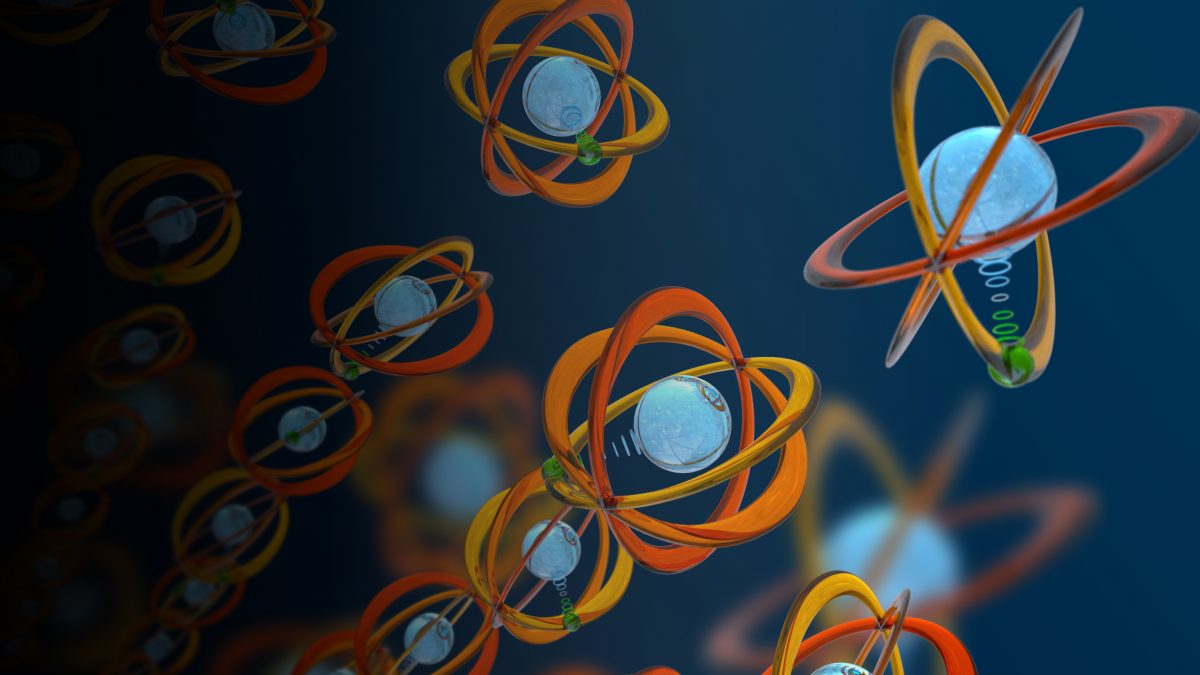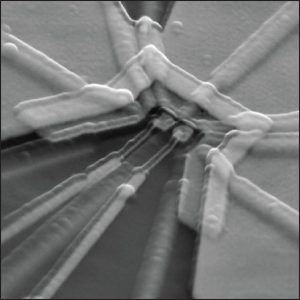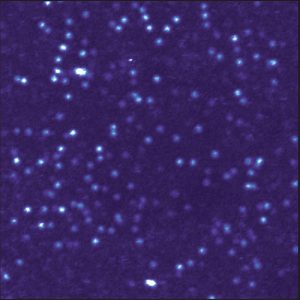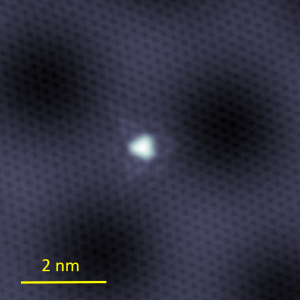Research Associate Benjamin Woods and a team including Distinguished Scientist Mark Friesen, John Bardeen Prof. of Physics Mark Eriksson, Honorary Associate Robert Joynt and Graduate Student Emily Joseph developed a...
Read the full article at: https://www.warf.org/videos/quantum-computing-without-errors-2023-warf-innovation-award-nominee/Quantum Theory
Prof. Soley receives ACS Kavli Emerging Leader Award
Congratulations to Micheline Soley for receiving the American Chemical Society Kavli Emerging Leader Award!
The Kavli Foundation Lecture Series recognizes groundbreaking discoveries by scientists tackling many of the world’s mounting challenges; and in particular, the Emerging Leader Award is for distinguished younger scientist who is highly regarded by their peers for significant contributions to an area of chemistry and multidisciplinary areas of chemistry. The award is a keynote lecture and the only Kavli young investigator talk at the American Chemical Society meeting.
Opening doors to quantum research experiences with the Open Quantum Initiative
This past winter, Katie Harrison, then a junior physics major at UW–Madison, started thinking about which areas of physics she was interested in studying more in-depth. “Physics is in general so broad, saying you want …
Read the full article at: https://www.physics.wisc.edu/2022/08/29/opening-doors-to-quantum-research-experiences-with-the-open-quantum-initiative/New study expands types of physics, engineering problems that can be solved by quantum computers
A well-known quantum algorithm that is useful in studying and solving problems in quantum physics can be applied to problems in classical physics, according to a new study in the journal Physical Review A from University of Wisconsin–Madison assistant professor of physics Jeff Parker.
Quantum algorithms – a set of calculations that are run on a quantum computer as opposed to a classical computer – used for solving problems in physics have mainly focused on questions in quantum physics. The new applications include a range of problems common to physics and engineering, and expands on the types of questions that can be asked in those fields.
Chicago Quantum Summit to gather international experts

Top experts in quantum technology from around the globe — including experts from the Wisconsin Quantum Institute — will gather at the University of Chicago on Oct. 25 to discuss the future of quantum information science and strategies to build a quantum workforce.
The second annual Chicago Quantum Summit, hosted by the Chicago Quantum Exchange, will engage scientific and government leaders and the industries that will drive the applications of emerging quantum information science.
WQI scientists earn grant to improve materials for quantum sensing, computing
Researchers at the Wisconsin Quantum Institute (WQI) have been awarded a US Department of Energy grant to study the noise that hampers advances in quantum systems, including quantum computers.
The three-year, $4 million funding will allow the researchers to apply emerging tools to identify new materials and fabrication methods that can improve the performance of these systems.
“All of physics is quantum on some level, and quantum systems let you understand how physics works when you get to the cleanest, smallest, most isolated systems,” says Shimon Kolkowitz, assistant professor of physics at the University of Wisconsin–Madison and lead investigator of the grant. “We think that quantum computing, and quantum technologies more generally, are a really promising area of technological development and research.”
Quantum systems — which make use of single atoms or electrons and the quantum mechanical properties that govern them — have the potential to push boundaries in such areas as computing, precision sensing, and secure communications.
Quantum computers, for example, allow scientists to simulate quantum mechanics in ways that classical computers cannot. But, the computing power of quantum computers has not yet exceeded classical ones.

A limiting factor in quantum computing power is the number of qubits, or quantum bits, that can be strung together. Like bits in a classic computer, the more qubits in a quantum computer, the more the computing power. And the limiting factor in how many qubits can be connected with each other while remaining in the fragile quantum states required to perform a computation — called “coherence” in quantum lingo — is their resistance to external environmental factors, or “noise” that may cause them to “decohere.”
However, researchers have found that the materials used to make the qubits themselves generate a lot of this noise.
“People for quite a while have seen this noise, treated it as a fact of nature, and tried to design around it. But no one really knows what it is or how to get rid of it,” Kolkowitz says. “Even more fundamentally than just understanding or reducing this noise, we think that if you can reduce or ultimately eliminate this noise, it actually opens up the design space for the kinds of qubits you can build, and that will make it much easier to wire qubits together.”
With the DOE funding, Kolkowitz, along with colleagues at WQI and the Livermore National Laboratory, seeks to first identify the nature of the noise and how specific materials contribute to it, and then to develop ways to reduce it.

Work in Kolkowitz’s group, as well as that of Victor Brar, assistant professor of physics and co-investigator on the grant, has led to the development of quantum sensors that allow the researchers to characterize things like magnetic fields at the nanometer scale, or to see how single atoms are arranged in various materials. Part of the DOE funding will be used to continue improving these sensors.
Kolkowitz and Brar then want to use their sensors to identify the noise affecting qubits designed by UW quantum computing researchers Mark Eriksson and Robert McDermott.
“And then we can work in a feedback loop, where, for example, Robert McDermott makes samples and characterizes their performance, then we study the noise limiting that performance with these quantum and nanoscale probes to figure out what’s happening on the microscopic scale,” Kolkowitz says. “Then, we give that information to our theory collaborators here and at Livermore who build models and simulations based on what we’ve measured. And then Robert can use what we’ve learned to design and make new samples to see if we’ve improved on these issues.”

Trying to identify sources of this noise is nothing new, but what Kolkowitz finds most promising about the work funded through this grant is the development and application of new sensing technologies.
“These emerging tools that use quantum states and quantum systems themselves should give us access to the origins and behavior of noise in quantum platforms on scales that haven’t been accessible before,” Kolkowitz says.
Other WQI members who are co-investigators on the grant include Jennifer Choy, Laura Faoro, Mark Friesen, and Alex Levchenko.